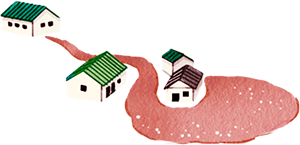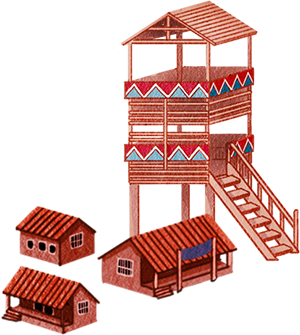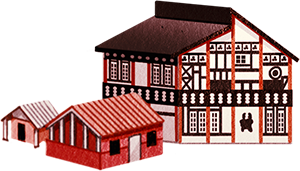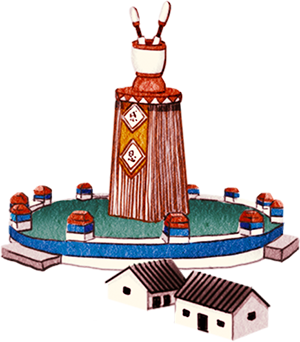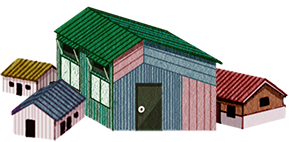In Taiwan, there are about 560,000 indigenous peoples. According to a survey done by Council of Indigenous Peoples, 47.53% indigenous peoples live in cities around Taiwan while 23.38% and 29.09% live respectively in plain and mountain communities. Pushed by the wave of economic structural transition, indigenous people live and work in cities and settle down to build their homes. After several generations, various types of living manners have been developed that enrich city life. Although there have been migration and struggling, indigenous peoples are tightly connected to their home communities and living in cities, they quietly witness historical development of cities.
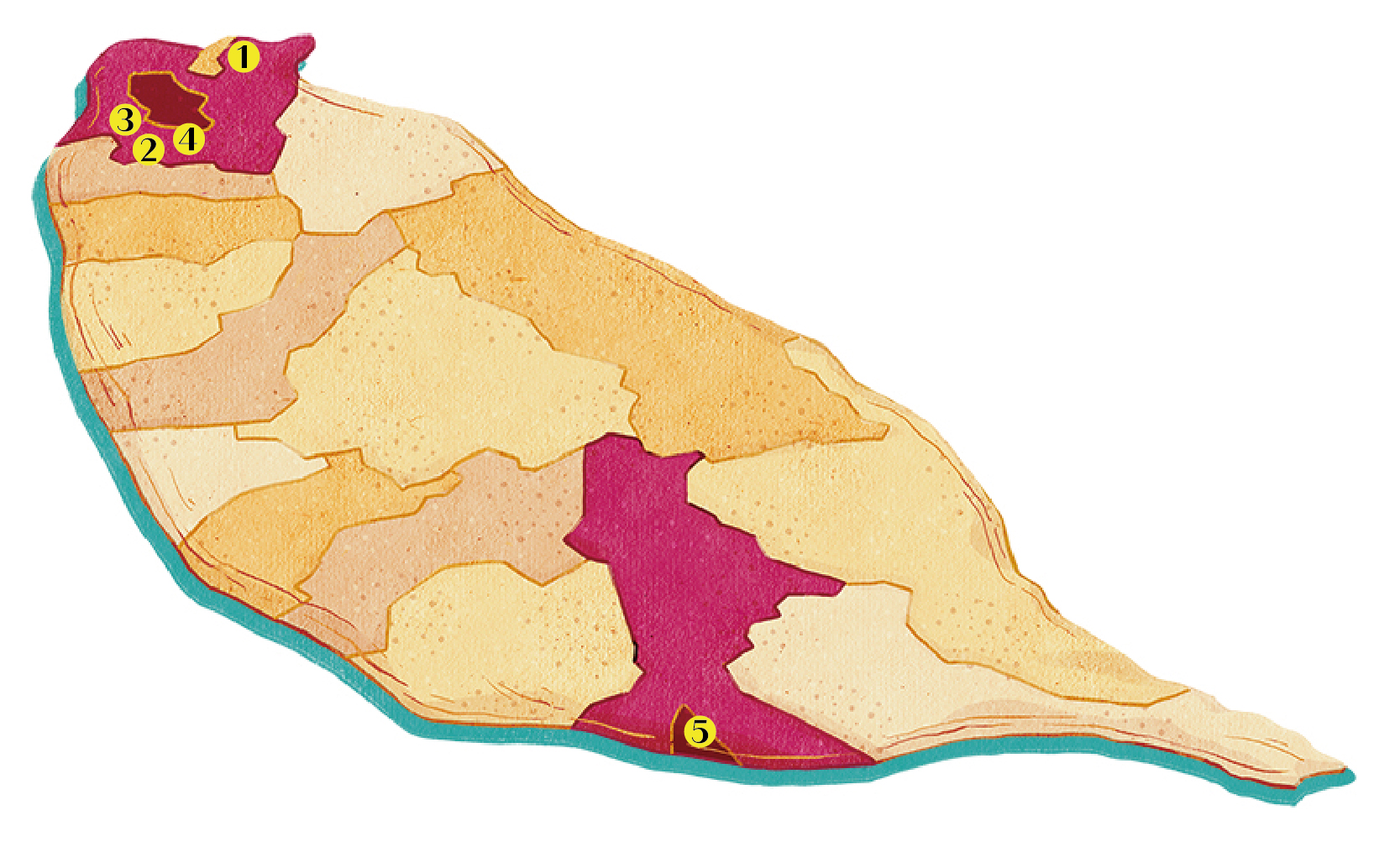
1.Happy Mountain Community
Around 1990, Pangcah people went to Northern Taiwan and participated in development and settlement of two Taipei cities. They built simple iron houses in now Ruifang District, New Taipei City where has the environment similar with their hometown surrounded by sea and mountain. To preserve memories of their hometown, Pangcah people lived together by collecting foods.
They named the settlement here “Happy Mountain” symbolizing they are a group of happy people. In 2014, Happy Mountain Community was reported with illegal occupancy of national land. Now Social Welfare Section of Administration Bureau for the Indigenous Peoples, New Taipei City intervened and assisted community residents with the hope to legalize land use here via rental policies.
2.Saowac Community
In the 1980s, Pangcah people from Xiuguluan River Area, Hualien, settled down at the river terrace in north side of Daxi, Taoyuan. They named this place in Pangcah language, Saowac meaning “the river side.” Residents of Saowac Community have made the best use of land and cultivate crops with natural agricultural method. They live in self-sufficient life.
In 2009, Taoyuan City Government planned to build bike lanes at Riverside Park by forcibly dismantling houses. Pangcah People thus held a harvest festival to respond to the Government with unified objection.
3.Sanying Community
Around 1970, Pangcah People settled down in Yingge nearby Dahan River building the mixed urban community for others from their hometown in Hualien and Taitung. Most indigenous residents here were labors of Haishan Mine. In 1994, Taipei City Government requested illegal house residents along Dahan River to move away with the reason of flooding treatment. Some residents received relocation arrangement and others who stayed began their long-time struggling with the government.
Afterwards, the Government admitted the police failure due to lack of consideration of indigenous cultural preservation. Few residents that stayed returned to their original place of settlement and built new Sanying Community where has about 40 house units.
4.Xizhou Community
In the 1970s, Pangcah People came to the Xindian River Area nearby Bitan to settle and build their houses. In 1997, a big fire destroyed the community. With outside donation and assistance, concrete construction material was used to build the community in the original site.
In 2007, Taipei City Government enacted the “Great Bitan Reconstruction Project” and continuously dismantled community houses. When appealing, the Presidential Candidate, Ma Ying-Jeou, at that time responded that “I view you as fellow human beings.” Under the support of various fields, both parties agreed to build living zone for the indigenous peoples with the joint management method for community sustainability.
5.Ljavek Community
In 1954, Paiwan People’s carpenters came here to build their houses and named the community, Ljavek meaning “by the river.” Later, due to the building of cannel, Ljavek live “along the road.” Here is national land and after many times of appealing, indigenous residents finally have their household plates and registration.
But the government in 1997, 2011, 2018, requested to dismantle the community and re-settle residents. This re-settlement plan, however, was not proper and residents moved in and out. Both sides failed to reach the consensus. At present, community residents and Indigenous Affairs Committee of Kaohsiung City Government are still negotiating the future of Ljvaek.

